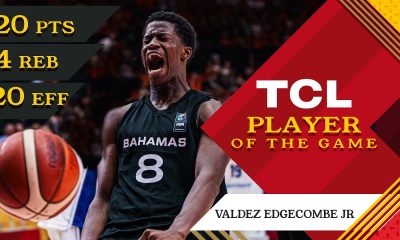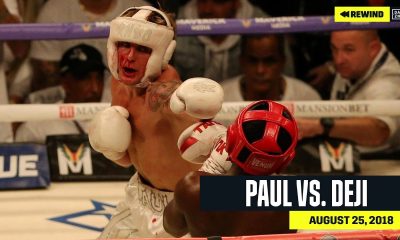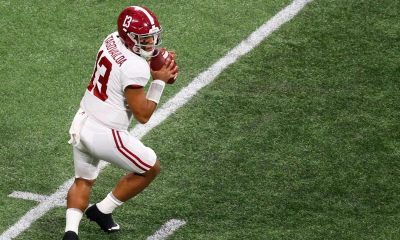NIL
Joe Buck presses young broadcasters to 'have enough confidence not to talk'
In the first several years of his ESPN deal, Joe Buck has been sidelined beyond the Wild Card round of the NFL postseason. He does not call baseball anymore. But with an ABC Super Bowl coming up in 2027, Buck is still working to perfect his craft- and wants to make everyone around him better. […]
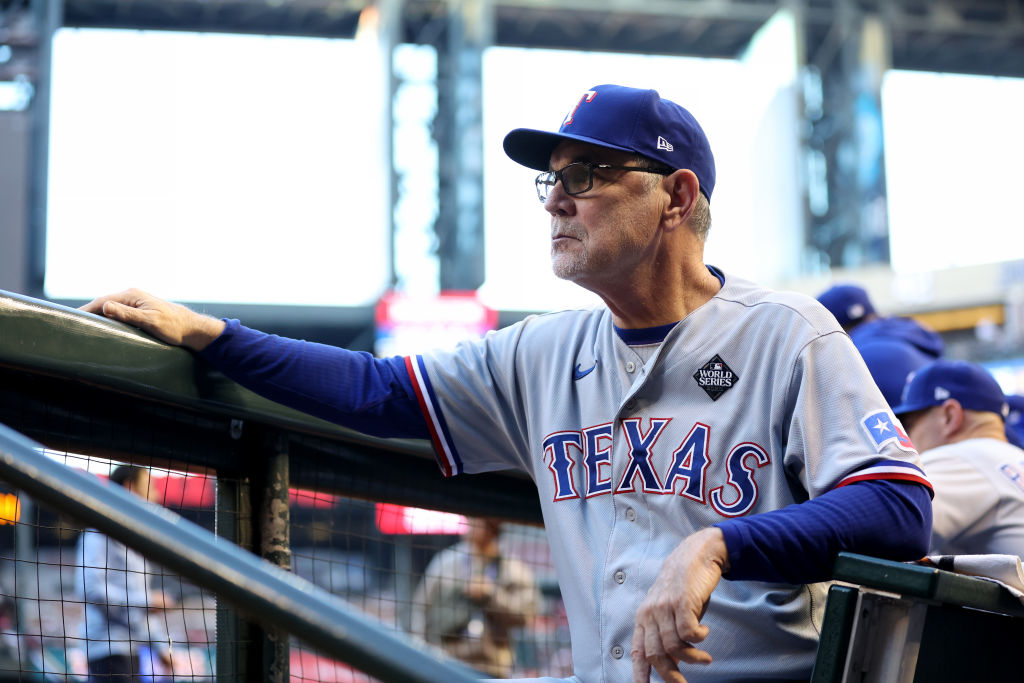
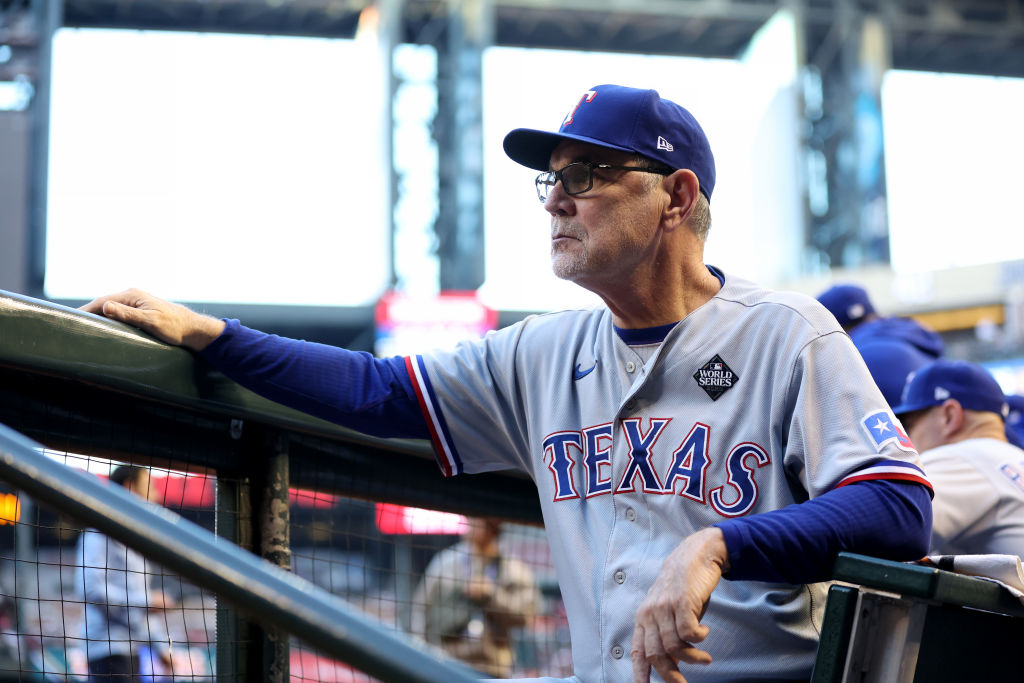

In the first several years of his ESPN deal, Joe Buck has been sidelined beyond the Wild Card round of the NFL postseason. He does not call baseball anymore. But with an ABC Super Bowl coming up in 2027, Buck is still working to perfect his craft- and wants to make everyone around him better.
Think of Joe Davis’ call of Freddie Freeman’s World Series grand slam last October or Jim Nantz’s nod to Brent Musberger on Kansas City’s Super Bowl-winning touchdown, which fans accused Tony Romo of stepping on, and brevity is the key. The greats deliver the call, lay out the stakes, and then get out of the way.
In an interview with Andrew Marchand on the Marchand Sports Media podcast, released ahead of Buck’s final regular-season NFL broadcast for ESPN, Buck advocated for young announcers to embrace the fact that “there is no such thing as dead air anymore” and to “have enough confidence not to talk.”
“For younger broadcasters, you’re always afraid of dead air,” Buck explained. “Because I think in your mind, and we’re all insecure … and you think, especially when you’re young if I don’t talk here, the audience thinks I don’t know what to say. So I’ve got to say something, I’ve gotta go 100 miles per hour, and if I don’t say something, if I let it breathe, so to speak, it’s telling the audience that I shouldn’t be sitting here. And that is not true. In fact, it’s the opposite if you really think about it. If you have enough confidence to not talk, it’s really powerful.”
Many of the biggest moments in sports are punctuated by silence in the booth. Particularly in baseball and football, where the action pauses between plays, announcers can cue up the crowd and the athletes and then let it ride.
That push for improvement is made easier by all the technological leaps that have come during his broadcasting career. In particular, the development of high-quality on-field audio technology allows him to embrace “dead air” more than ever before and let what’s happening in the stadium carry a big moment on the broadcast.
Buck explained that They can do that because of the level of audio they get from field-level nowadays.
Buck encouraged broadcasters to rest on the fact that they can always circle back to the analysis. Even for Romo, after the Chiefs’ game-winner, there is so much airtime between the end of the game and the trophy ceremony to break down that winning play.
Joe Buck is one of the best sports announcers ever, but even he is always trying to get better.
“With the kind of audio that we all have on these networks, there is no such thing as dead air anymore,” Buck said. “Dead air doesn’t exist because the microphones are so good, there’s so much natural sound that that can carry it, and you don’t need to talk over it.”
Back to the Romo side of Nantz’s Super Bowl call on CBS, part of the job of an analyst is to read the moment as well. Most of the time, the analyst is vital to fans understanding what’s happening in the game. But in the biggest moments, it is obvious what’s happening. All that matters is for the play-by-player to sum up the moment and bring energy.
[Marchand Sports Media]
“I stink if I talk over that (moment),” Buck said. “There’s always going to be time. Until you go off the air, you’re gonna have time to say it; you’re gonna have time to analyze it.”
NIL
Boulder law firm files appeal of House v. NCAA settlement – Boulder Daily Camera
A law firm in Boulder representing a group of female athletes filed an appeal of the House v. NCAA settlement on Wednesday. The firm of Hutchinson Black and Cook (HBC) is arguing that the landmark settlement, which was approved on Friday by Judge Claudia Wilken in Northern California, violates the gender equity statute in Title […]

A law firm in Boulder representing a group of female athletes filed an appeal of the House v. NCAA settlement on Wednesday.
The firm of Hutchinson Black and Cook (HBC) is arguing that the landmark settlement, which was approved on Friday by Judge Claudia Wilken in Northern California, violates the gender equity statute in Title IX.
According to FrontOfficeSports.com, this is the first appeal of the House settlement. There are expected to be more appeals in the coming months based on Title IX.
NIL
BSB | Madrigal Named NCBWA Second Team All-American, Program’s First Since 2019
Story Links 2025 NCBWA All-American Teams DALLAS, Texas. – Eddie Madrigal was the lone West Coast Conference All-American as he was named to the NCBWA Second Team for his first career All-American selection. Madrigal put together one of the most complete seasons individually in […]
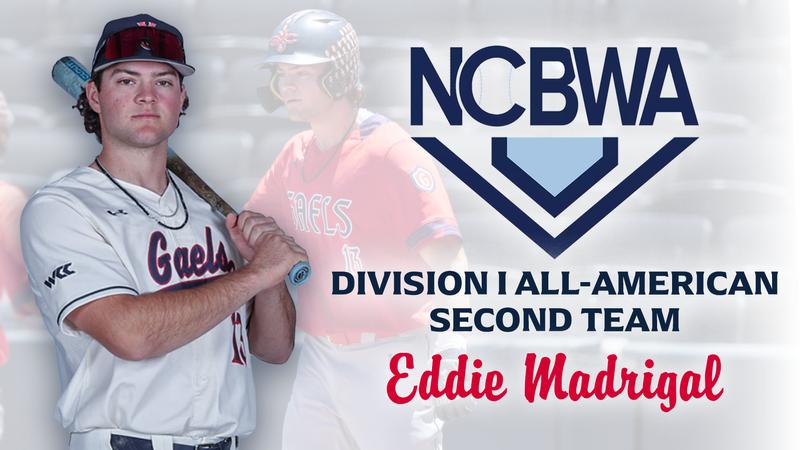
DALLAS, Texas. – Eddie Madrigal was the lone West Coast Conference All-American as he was named to the NCBWA Second Team for his first career All-American selection. Madrigal put together one of the most complete seasons individually in program history, finishing with a .368 batting average, 21 home runs, 78 RBI, a .698 slugging percentage and a conference leading 1.160 OPS.
Madrigal was named to the All-WCC First Team and was a Player of the Year candidate all season long, hitting .396 and belting eleven homers in the team’s 24 conference games. Madrigal was also named the WCC Tournament’s Most Outstanding Player after finishing the postseason tournament with a .455 average, ten hits, 13 runs scored, two home runs and a team high eleven RBI.
Madrigal played a huge role in the Gaels historic season as they won their second ever WCC Tournament Championship and secured their first NCAA Regional win in program history after upsetting eighth ranked Oregon State. Madrigal became the first Saint Mary’s All-American since 2019 when Tyler Thornton was named an NCBWA Freshman All-American as well as the NCBWA Freshman Pitcher of the Year. Thornton finished his rookie season with a 10-2 record, a 2.71 ERA and 94 strikeouts. Head coach Eric Valenzuela has now produced five ABCA All-Region selections and three NCBWA All-Americans in his eight seasons leading the Gaels baseball program. The complete All-American teams can be found HERE or at sportswriters.net.
About the NCBWA…
There are 17 different conferences and 16 conference championship squads represented among the ’25 standouts. The three All-America squads are also made up of 16 conference players or co-players of the year, 12 conference pitchers of the year, five conference relief pitchers of the year, and nine Division I loop defensive players of the year.
All 84 student-athletes on the teams took their teams to the pinnacle of NCAA Championship competition this spring or helped them qualify for the NCAA World Series. There are 14 All-America stalwarts competing in the 78th NCAA Division I World Series, and dozens of others played in NCAA Regionals or Super Regionals.
Founded in 1962, the NCBWA is dedicated to the advancement of college baseball. Membership is open to writers, broadcasters and publicists of the sport. For more information about the NCBWA, visit the association’s official Web site, www.ncbwa.com.
Be sure to follow your Gaels on Facebook, Instagram, and X to get all the latest Saint Mary’s athletics updates and information.
#GaelsRise
NIL
Memphis Football Coach Explains NIL and Transfer Portal Challenges | Chris Vernon Show
Memphis football coach Ryan Silverfield joins today’s episode of the Chris Vernon Show to talk all things recruiting, transfer portal, and NIL in today’s college football landscape.If you have any questions about how things work for a head coach in college football, he answers them.#chrisvernonshow#collegefootball#cfb#memphistigers#memphis#transferportal#nil Link 0
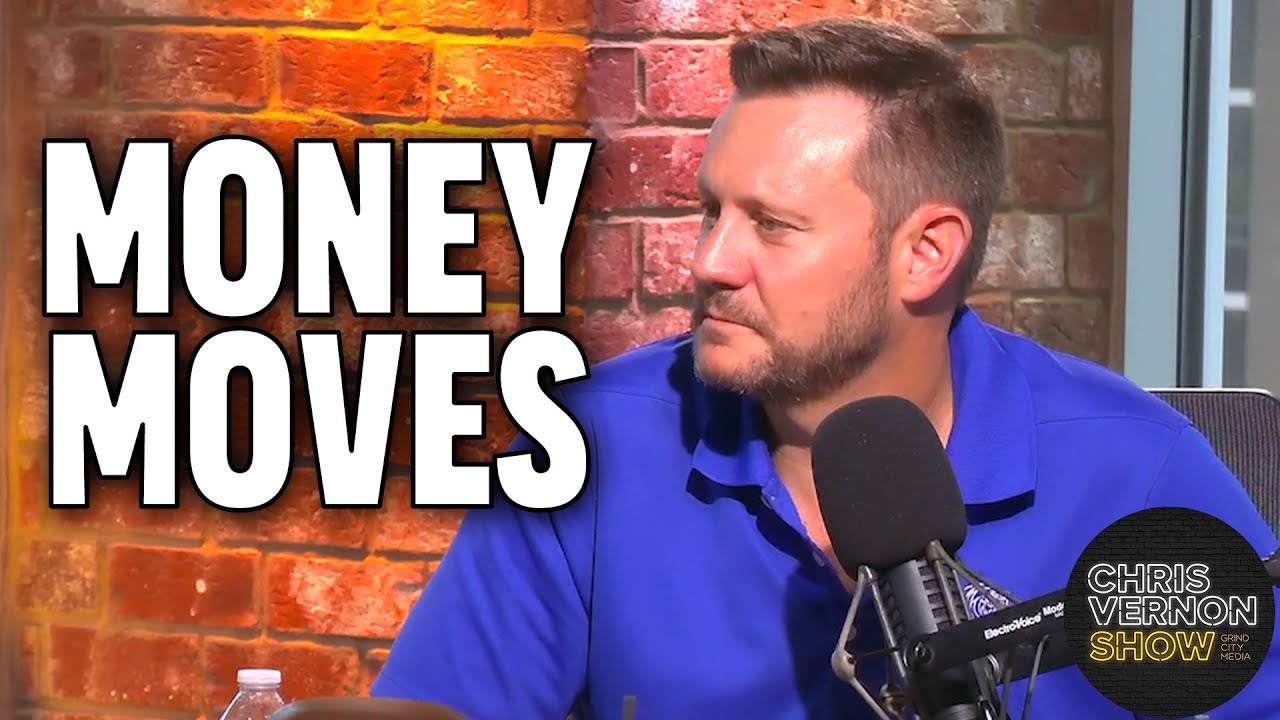
Memphis football coach Ryan Silverfield joins today’s episode of the Chris Vernon Show to talk all things recruiting, transfer portal, and NIL in today’s college football landscape.
If you have any questions about how things work for a head coach in college football, he answers them.
#chrisvernonshow
#collegefootball
#cfb
#memphistigers
#memphis
#transferportal
#nil
NIL
John Calipari gets 100% real on ‘expectation’ that comes with lucrative NIL numbers
The post John Calipari gets 100% real on ‘expectation’ that comes with lucrative NIL numbers appeared first on ClutchPoints. The NIL era has accelerated recruiting into becoming a bidding war on what schools offer the most money in NIL. The numbers circulating in college basketball recently have been massive, and one of the game’s best […]
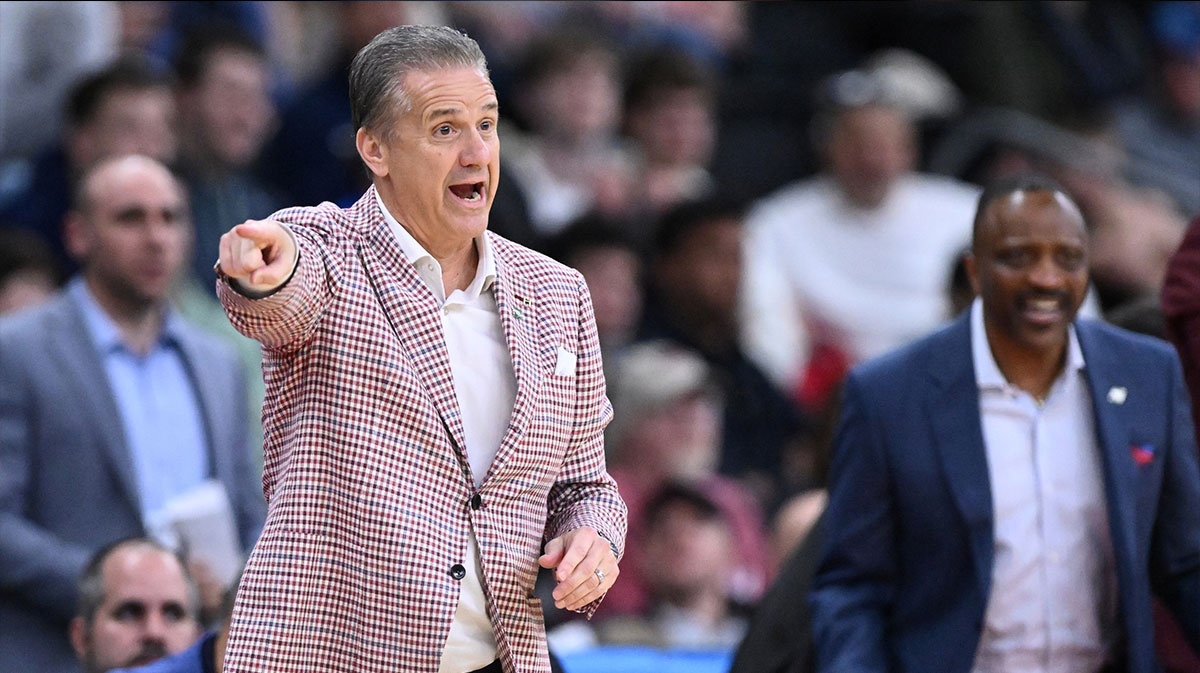
The post John Calipari gets 100% real on ‘expectation’ that comes with lucrative NIL numbers appeared first on ClutchPoints.
The NIL era has accelerated recruiting into becoming a bidding war on what schools offer the most money in NIL. The numbers circulating in college basketball recently have been massive, and one of the game’s best recruiters, Arkansas’ John Calipari, recently spoke up about how that shapes the expectations for transfers and recruits who come into their new schools.
Advertisement
As one of the best recruiters in college basketball and potentially all college sports, Calipari has firsthand experience with NIL. While NIL has not changed Calipari’s status as an elite recruiter, it has emboldened him even more, bringing in top recruits at Kentucky and Arkansas. However, big-time players come with big-time money, and Calipari admitted that he and his staff tread lightly even more now due to that aspect of recruiting.
Calipari was on an episode of Golic & Golic on FanDuel Sports Network this week and elaborated on how they navigate this new landscape.
“Did you see the interview with the Kansas State player (Coleman Hawkins) after last year’s season, where he cried? Cried. ‘They paid me $2 million and I couldn’t live up to it.’ There’s one thing about being the star on any team,” Calipari said. “You guys did it, that star makes the most and, wow, but the most is expected from them. So, some guys in college basketball this year are making between $ 3 million and $5 million. Teams are spending 20 million on rosters. Now there’s an expectation. You better win a national title, or you better be a guy, Calipari said.
“If one of you paid a college player four million, would you expect that $4 million player to drag us to the Final Four?”
Advertisement
In some cases, the risk might not outweigh the reward when programs like Arkansas basketball offer millions of dollars to recruits. Calipari continued to elaborate on how this is impacting the current recruiting landscape.
“That’s different than a seasoned professional dealing with it. So, trying to keep that away from what we do, but social media brings it right back,” Calipari said. “This guy’s making $3 million, and this is the best he is. So, you know, it’s — I think we gotta protect our kids, but some of it, you can’t. You want to be paid a lot. You’re now a professional. You need to perform.”
Thanks to the House settlement being approved, some NIL numbers should be curbed, and at least the field in college sports should be leveled. However, this new era of recruiting is a bidding war, and Calipari and other coaches need to adapt to navigating the potential expectations that come with that.
Related: Fans debate possible NBA-like change in college hoops
Related: LSU’s Flau’jae Johnson gets brutally honest on Angel Reese relationship: ‘We’re not friends’
NIL
There Looks To Be a Lot of Competition in the Front Court for Oklahoma State
STILLWATER – Steve Lutz and Co. are looking to have some success this season in order to try and have some stability with the roster moving forward in this new era of college basketball with NIL and the transfer portal. Now, success doesn’t/won’t always equal a stable roster as there will always be players who are […]
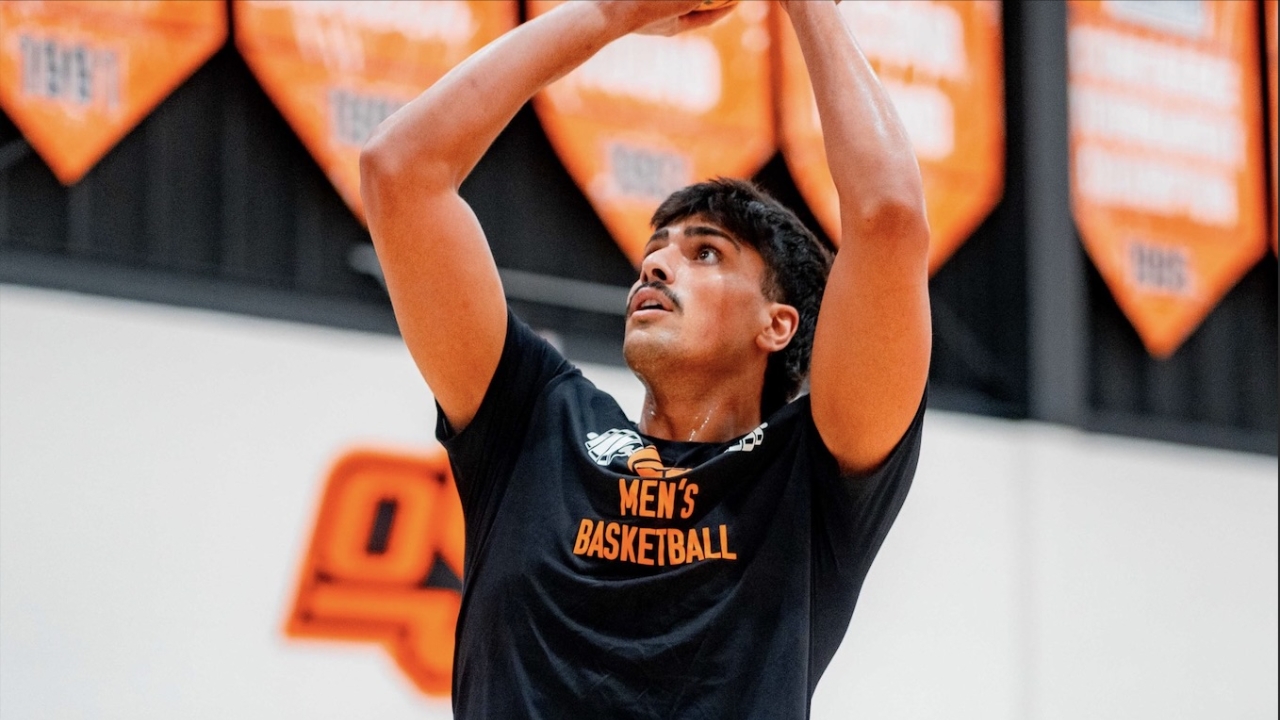
STILLWATER – Steve Lutz and Co. are looking to have some success this season in order to try and have some stability with the roster moving forward in this new era of college basketball with NIL and the transfer portal.
Now, success doesn’t/won’t always equal a stable roster as there will always be players who are either unhappy with their current playing time/money situation, or any other number of factors which will always be there.

Oklahoma State University Athletics
Robert Jennings II against Baylor last year.
As for this year’s roster, it looks nearly completely different from last year’s as only two scholarship players returned in Robert Jennings II and Andrija Vukovich. There have been seven transfers, three high school players and an older international freshman added. In keeping things with last year and this year different, this year’s roster has more youth on it. So, hopefully with success and wins comes more players willing to stick around after the season, allowing Lutz and Co. to create some stability.
Now, a good chunk of the youth is at the forward and center positions. Lutz brought in two high school bigs in Ben Ahmed and Mekhi Ragland, international freshman Lefteris Mantzoukis and transfer F/C Parsa Fallah to go with Vukovic who has improved physically from last year.
I’ve talked to someone close to the program who believes Fallah to be the main big right now based on experience, fitness and talent. But this summer will hopefully make it a much tougher position as the high school players get into better shape and used to the speed and physicality of the college game.

Oklahoma State Athletics
Fallah in practice.
Fallah checks in at 6-9, 260 pounds and is in Stillwater by the way of Oregon State. He averaged nearly 13 points per game as a junior for the Beavers on 60% shooting from the floor, with four rebounds and one assist per game.
“Parsa’s been great,” said Lutz. “He’s been one of those guys that’s tried to lead. He has an infectious personality, he doesn’t ever have a bad day when he walks in the room, he brings the energy level up. He adds to the room and he’s great. He needs to get a little bit better shape right now, but we expect big things from him. But I’m telling you, I really think that there’s gonna be a lot of competition along that front line. I really do because those two freshman, man, they don’t know what they’re doing yet, but there’s a lot of talent and a lot of ability. Then like you say, Mili [Vukovic] is coming back for his second year, so he’s lightyears ahead of where he was last year.”
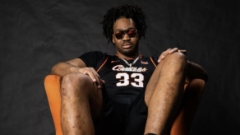
Pokes Report
Ahmed on his official visit to Stillwater.
Both Ahmed and Ragland are roughly 6-10 and need to trim up, put on some muscle and get stronger. No one really knows what Mantzoukas can/will bring to the table as he won’t be in Stillwater for the foreseeable future to due student visas being paused. OSU is working with the state government and Washington to get it cleared up.
NIL
John Calipari gets real on lucrative NIL ‘expectations’
The NIL era has accelerated recruiting into becoming a bidding war on what schools offer the most money in NIL. The numbers circulating in college basketball recently have been massive, and one of the game’s best recruiters, Arkansas’ John Calipari, recently spoke up about how that shapes the expectations for transfers and recruits who come […]

The NIL era has accelerated recruiting into becoming a bidding war on what schools offer the most money in NIL. The numbers circulating in college basketball recently have been massive, and one of the game’s best recruiters, Arkansas’ John Calipari, recently spoke up about how that shapes the expectations for transfers and recruits who come into their new schools.
As one of the best recruiters in college basketball and potentially all college sports, Calipari has firsthand experience with NIL. While NIL has not changed Calipari’s status as an elite recruiter, it has emboldened him even more, bringing in top recruits at Kentucky and Arkansas. However, big-time players come with big-time money, and Calipari admitted that he and his staff tread lightly even more now due to that aspect of recruiting.
Calipari was on an episode of Golic & Golic on FanDuel Sports Network this week and elaborated on how they navigate this new landscape.
“Did you see the interview with the Kansas State player (Coleman Hawkins) after last year’s season, where he cried? Cried. ‘They paid me $2 million and I couldn’t live up to it.’ There’s one thing about being the star on any team,” Calipari said. “You guys did it, that star makes the most and, wow, but the most is expected from them. So, some guys in college basketball this year are making between $ 3 million and $5 million. Teams are spending 20 million on rosters. Now there’s an expectation. You better win a national title, or you better be a guy, Calipari said.
Article Continues Below
“If one of you paid a college player four million, would you expect that $4 million player to drag us to the Final Four?”
In some cases, the risk might not outweigh the reward when programs like Arkansas basketball offer millions of dollars to recruits. Calipari continued to elaborate on how this is impacting the current recruiting landscape.
“That’s different than a seasoned professional dealing with it. So, trying to keep that away from what we do, but social media brings it right back,” Calipari said. “This guy’s making $3 million, and this is the best he is. So, you know, it’s — I think we gotta protect our kids, but some of it, you can’t. You want to be paid a lot. You’re now a professional. You need to perform.”
Thanks to the House settlement being approved, some NIL numbers should be curbed, and at least the field in college sports should be leveled. However, this new era of recruiting is a bidding war, and Calipari and other coaches need to adapt to navigating the potential expectations that come with that.
Jake Faigus graduated from the University of Arizona in 2022 and has had stops at Catena Media, Playmaker, DraftKings, USA Today, Spike Up, and Spotlight Sports Group. He also writes for Sporting News and works at iHeartMedia in Phoenix.
-

 NIL2 weeks ago
NIL2 weeks ago2025 NCAA Softball Tournament Bracket: Women’s College World Series bracket, schedule set
-

 Health6 days ago
Health6 days agoOregon track star wages legal battle against trans athlete policy after medal ceremony protest
-

 College Sports2 weeks ago
College Sports2 weeks agoIU basketball recruiting
-

 Professional Sports7 days ago
Professional Sports7 days ago'I asked Anderson privately'… UFC legend retells secret sparring session between Jon Jones …
-

 Professional Sports7 days ago
Professional Sports7 days agoUFC 316 star storms out of Media Day when asked about bitter feud with Rampage Jackson
-

 Rec Sports2 weeks ago
Rec Sports2 weeks agoScott Barker named to lead CCS basketball • SSentinel.com
-

 Youtube3 weeks ago
Youtube3 weeks agoAnt greets A-Rod & Barry Bonds before Game 3
-

 Rec Sports2 weeks ago
Rec Sports2 weeks agoJ.W. Craft: Investing in Community Through Sports
-

 Motorsports2 weeks ago
Motorsports2 weeks agoNASCAR Penalty Report: Charlotte Motor Speedway (May 2025)
-

 College Sports1 week ago
College Sports1 week agoOKC’s Mark Daigneault knows what it takes to win championships. His wife has won a ton of them








